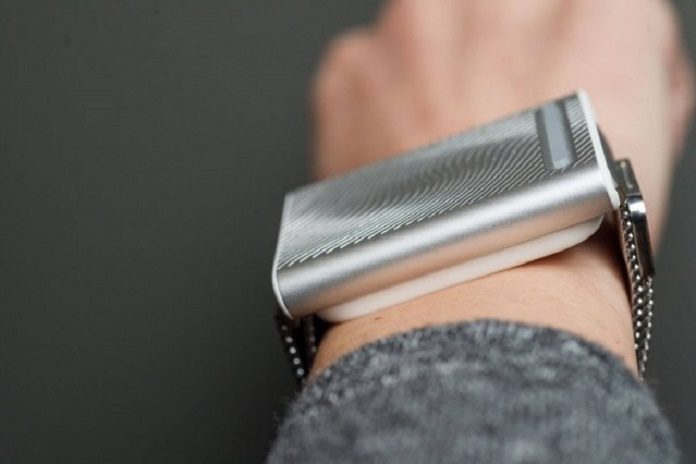Boston’s cold winter can be sometimes unbearable. But now, it will be bearable with the help of newly demonstrated personal thermostat wristband.
Developed by MIT engineering students, this smart wristband called Wristify, makes the wearer feel warmer or cooler.
The wristband consists of a flat aluminum top with a colored display. The user can adjust it from blue to red, to provide cooling or warming.
Inside the wristband and touching the skin is a thermoelectric tile made of materials that change temperature when exposed to an electrical current. During heating, the current goes into the plate, creating heat waves. When cooling, the device dissipates heat with aid of the aluminum body, a popular material used for heat exchange.
Embr Labs co-founder David Cohen-Tanugi Ph.D. ’15 said, “The aim is to make temperature personal. We want people who are often uncomfortable and have little control over temperature to have more control and more relief in everyday life.”
Furthermore, this personal thermostat device could also help in detecting vitality use in structures. During experiments, students showed that if a building’s thermostat neutral zone, the temperature range before air conditioning or heating kicks on is extended by 1 degree, it can reduce energy consumption by up to 10 percent. It actually relies on the geographical location and type of building. If extended by 2 degrees, it can reduce energy use by up to 20 percent.
According to the team, the wristband keeps the wearer comfortable enough to extend that neutral zone.
Co-founder Sam Shames said, “Despite being dubbed a “personal thermostat,” an important selling point of the wristband, was ditching any mention of temperature, opting instead for a gradual hot-cold scale. It’s less like a thermostat and more like a shower.”
“No one knows what temperature their shower is. You just set it to the sensation that feels good.”
During experiments, when the wristband delivered heat in waves. But after few minutes, they become accustomed to the temperature, so they turn up the heat.
Students here developed a method for delivering rhythmic waves of temperature that fade in and out, which stops users from acclimating to one sensation and constantly increasing the heat.
Cohen-Tanugi said, “We had to go from power electronics and mechanical engineering to physiology and psychology, in order to build a framework of dynamic heat rhythms that would pack as much temperature relief as possible in a sleek wristband. It was a whole new technological challenge.”
The startup is now taking orders for its first production run.
